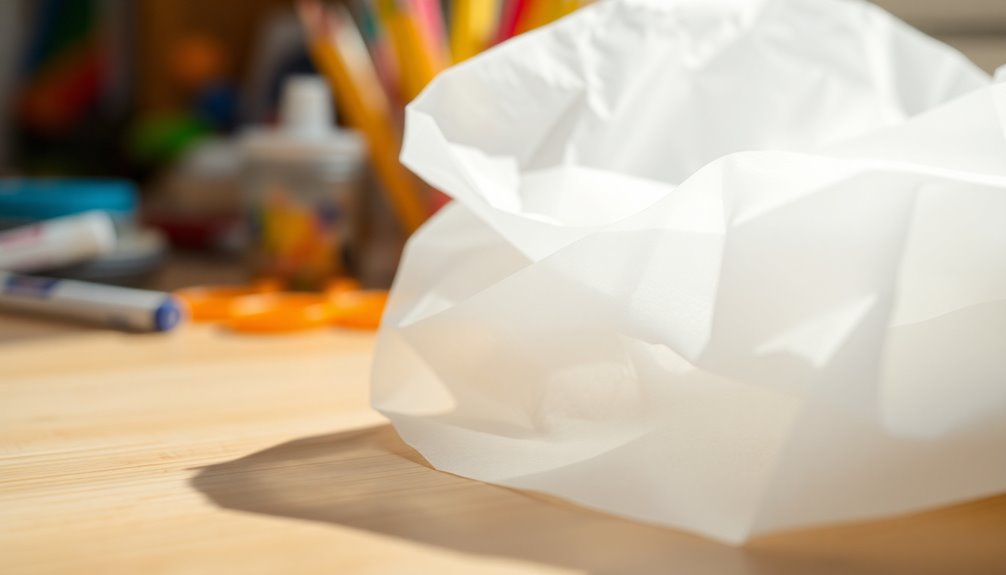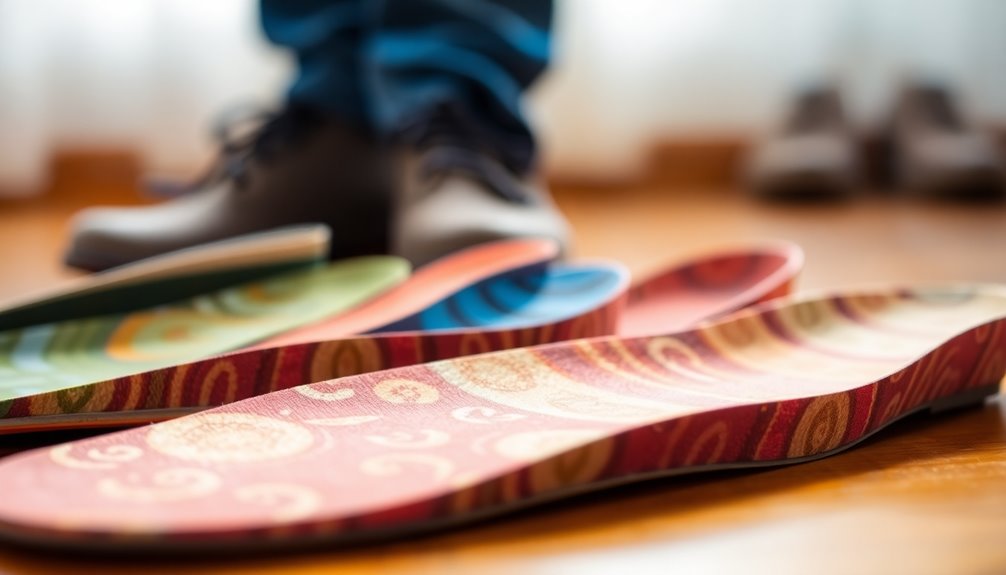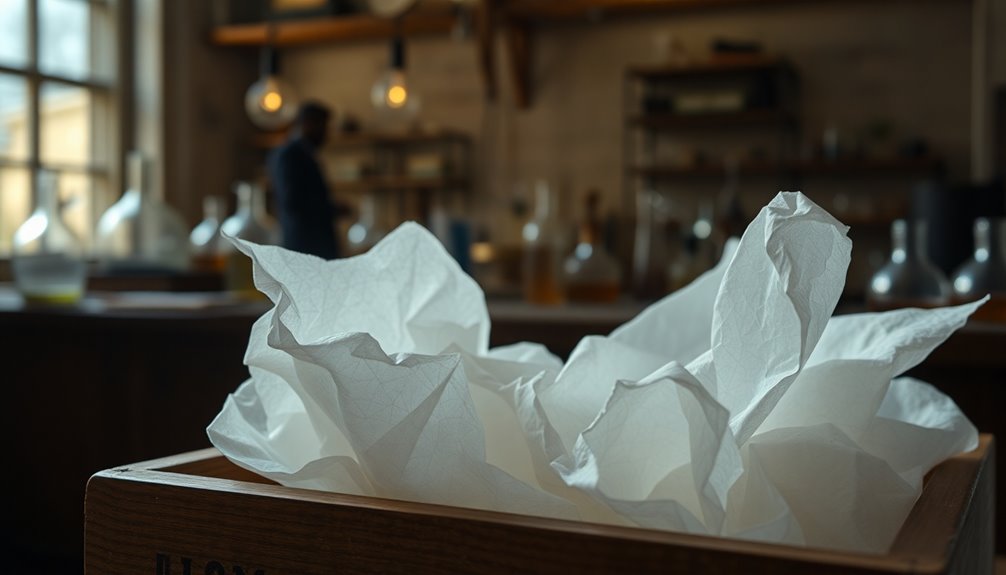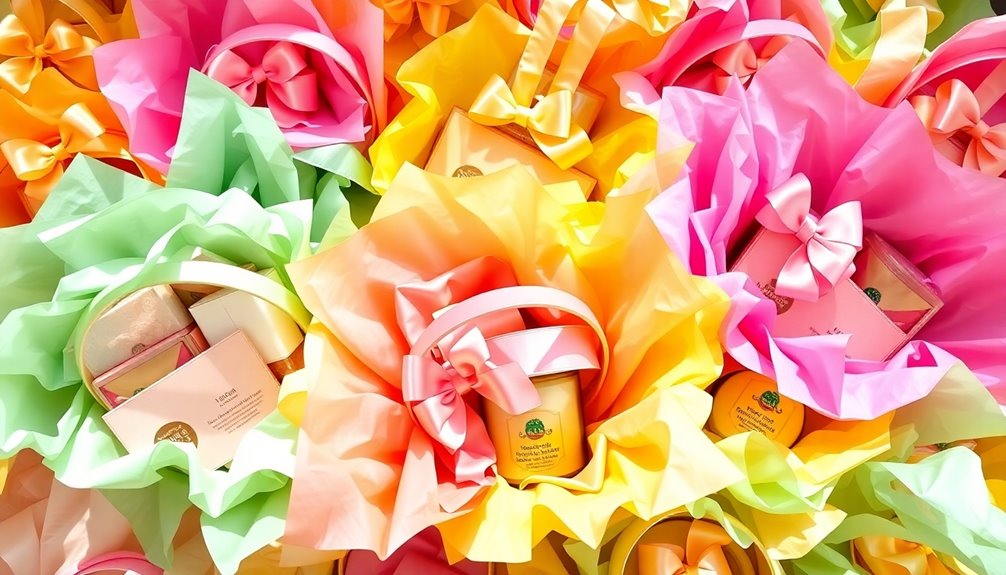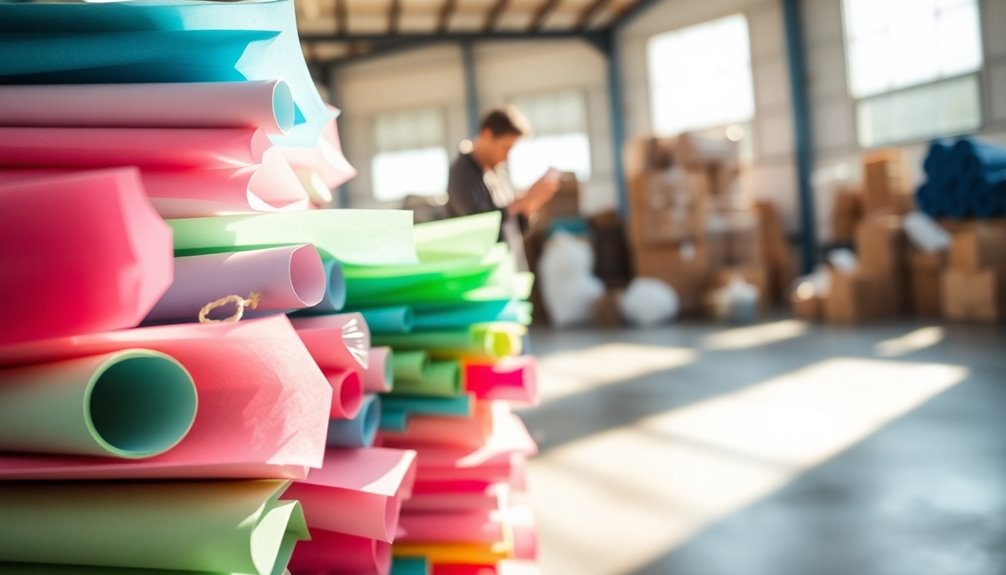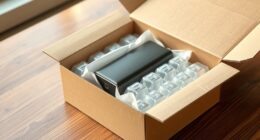Not all tissue paper is acid-free, but acid-free options are available and offer great benefits. Acid-free tissue paper has a neutral pH around 7.0, preventing deterioration and minimizing risks of yellowing. It's perfect for wrapping delicate items and safely preserving photographs, textiles, and heirlooms. Regular tissue paper often contains harmful acids that can lead to damage over time. When purchasing, look for clear labels indicating it's acid-free and consider certifications for safety. Understanding more about its uses and environmental benefits can help you make informed choices for your preservation needs. There's a lot more to explore on this topic!
Key Takeaways
- Not all tissue paper is acid-free; only tissue specifically labeled as acid-free has a neutral pH around 7.0.
- Acid-free tissue paper is manufactured without harmful acids and chemicals, ensuring the preservation of delicate items.
- It is commonly used for wrapping fragile objects, interleaving in books, and storing garments to prevent damage.
- Certifications like the Forest Stewardship Council (FSC) can help confirm that the tissue paper is responsibly sourced and acid-free.
- Acid-free tissue paper is recyclable and compostable, promoting environmentally friendly disposal practices.
Definition of Acid-Free Tissue Paper
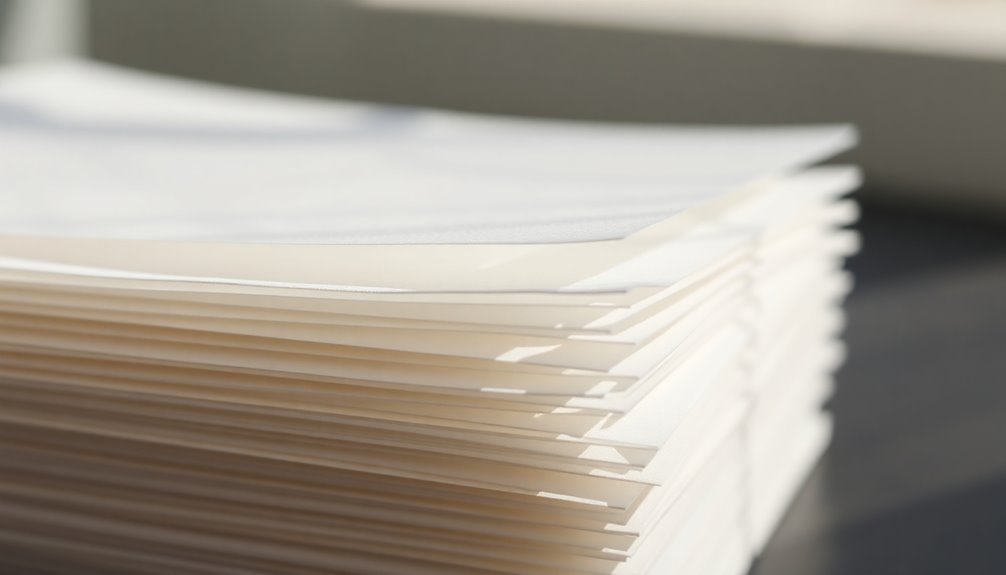
Acid-free tissue paper is specifically designed to protect delicate items from deterioration. This type of paper is manufactured to have a neutral pH level, typically around 7.0, which helps prevent degradation.
Unlike regular tissue paper that often contains natural acids, acid-free paper minimizes the risk of yellowing and brittleness in the materials you want to preserve.
Made using alkalines like calcium carbonate instead of harmful chemicals, Acid-Free Tissue Paper creates a non-reactive environment for sensitive items. This is vital, especially in archival contexts, such as museums and libraries, where valuable artifacts and documents require protection from environmental damage.
You'll find that using acid-free tissue paper is essential for preserving items like photographs, textiles, and other delicate materials, as it helps maintain their original condition over time.
When you choose acid-free tissue paper, you're making a wise decision to safeguard your cherished possessions. Understanding this definition can help you appreciate the importance of using the right materials for preservation, ensuring your items remain safe and intact for years to come.
Benefits of Acid-Free Tissue Paper
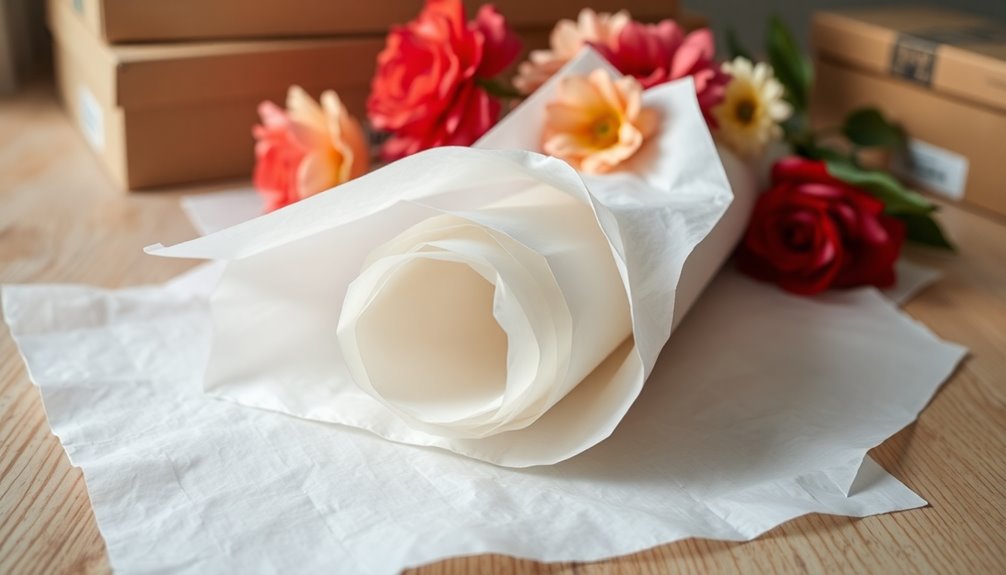
When you choose acid-free tissue paper, you're ensuring that your delicate items stay preserved without the risk of yellowing or damage.
Plus, its environmentally friendly nature makes it a safe option for both your belongings and the planet.
You'll find that its versatile applications make it perfect for everything from wrapping fragile objects to enhancing the presentation of special gifts.
Preservation of Delicate Items
Using acid-free tissue paper is essential for preserving delicate items, as it maintains a neutral pH level around 7.0. This feature helps prevent yellowing and brittleness over time, ensuring your treasured possessions remain in pristine condition.
Here's why you should opt for acid-free tissue when storing delicate items:
- Non-Reactive: Acid-free tissue is designed to be non-reactive, so it won't interact chemically with sensitive materials.
- Mold and Mildew Prevention: It greatly reduces the risk of mold and mildew growth, vital for long-term storage of fragile items like textiles and photographs.
- No Harmful Chemicals: Unlike regular tissue paper, acid-free options don't contain harmful chemicals that can cause discoloration or deterioration.
- Lightweight and Flexible: Acid-free tissue paper is easy to wrap or interleave around items, providing an effective barrier against environmental damage.
Environmental Safety Benefits
For those concerned about environmental impact, opting for acid-free tissue paper offers significant safety benefits. This type of tissue maintains a neutral pH level of 7.0 or higher, ensuring that it won't degrade or discolor your stored items.
By choosing acid-free tissue, you're also selecting a product that's manufactured with fewer chemical agents, making it a more eco-friendly option compared to regular tissue papers that might contain harmful substances.
Moreover, acid-free tissue paper is both biodegradable and compostable, which helps reduce waste and promotes sustainable practices among consumers like you.
It's free from optical brighteners and adheres to stringent limits on metallic content, enhancing its safety for environmental health and the integrity of your items.
Versatile Application Uses
The versatility of acid-free tissue paper makes it an invaluable asset in various applications, from protecting delicate items to preserving cherished memories.
Unlike regular tissue paper, which can cause yellowing and damage, acid-free tissue provides a safe option for your most treasured belongings.
Here are some key uses:
- Wrapping Fragile Items: Use acid-free tissue to wrap glassware and ceramics, safeguarding them from scratches during storage or transport.
- Archival Preservation: Preserve photographs, documents, and textiles with acid-free tissue, preventing deterioration over time.
- Book Protection: Interleave pages of books with acid-free tissue to protect against abrasion and wear, extending their lifespan.
- Food Packaging: Enhance the presentation of artisan breads and cupcakes while ensuring food safety by using acid-free tissue paper.
These applications highlight the advantages of acid-free tissue over regular tissue paper.
By choosing acid-free options, you not only protect your belongings but also maintain their quality and longevity.
This makes acid-free tissue a smart choice for anyone looking to preserve and protect their valuable items effectively.
Differences From Regular Tissue Paper

When you compare acid-free tissue paper to regular tissue paper, you'll notice significant differences in their chemical compositions.
Acid-free options are specifically processed to eliminate harmful acids and chemicals, making them safer for preserving valuable items.
This unique composition not only protects your belongings but also enhances their longevity, unlike regular tissue paper that can lead to deterioration over time.
Chemical Composition Variations
Acid-free tissue paper stands apart from regular tissue paper due to its unique chemical composition, which plays an essential role in its preservation qualities.
You'll find that acid-free tissue is manufactured without the natural acids found in wood pulp, resulting in a neutral to alkaline pH level, typically around 7.0 or higher. This contrasts sharply with regular tissue paper, which often contains harmful chemicals that lead to deterioration over time.
Here are some key differences in chemical composition:
- Absence of Natural Acids: Acid-free tissue lacks the acids that can cause yellowing and brittleness.
- Use of Alkalines: Instead of sulphur and lignin, acid-free tissue utilizes alkalines like calcium carbonate.
- No Optical Brighteners: Acid-free tissue avoids optical brighteners, ensuring a more natural appearance.
- Limited Metallic Content: Stringent limits on metallic content make acid-free tissue safer for sensitive items.
These variations in chemical composition make acid-free tissue ideal for protecting valuable items like photographs, textiles, and delicate artifacts, without causing harmful chemical reactions.
Preservation Capabilities Comparison
Understanding the preservation capabilities of acid-free tissue paper reveals its advantages over regular tissue paper. Acid-free tissue has a pH level of 7.0 or higher, which prevents the yellowing and brittleness commonly seen with regular tissue that often contains harmful acids. These acids can lead to deterioration over time, compromising your valuable items.
When it comes to long-term storage, acid-free tissue paper is non-reactive, ensuring the integrity of sensitive materials. Unlike regular tissue, which may cause dye transfer or chemical reactions, acid-free tissue protects your belongings. It's specifically designed for preservation, making it ideal for wrapping fragile items, storing photographs, and safeguarding heirlooms.
Regular tissue paper can deteriorate and release harmful acids that damage fabrics, while acid-free tissue is processed to remove contaminants, ensuring it's safe for delicate items.
The durability of acid-free tissue paper allows for extended preservation without the risk of degradation, making it the superior choice for items requiring careful handling and storage. By choosing acid-free tissue, you're investing in the longevity and protection of your cherished possessions.
Safe Uses of Acid-Free Tissue Paper

For anyone looking to preserve their cherished items, acid-free tissue paper serves as an invaluable resource. Its unique properties make it suitable for a variety of safe uses, ensuring your belongings remain in excellent condition for years to come.
Here are some ways you can use acid-free tissue:
- Wrapping Delicate Items: Use acid-free tissue to wrap photographs, textiles, and heirlooms, preventing yellowing and degradation.
- Food Packaging: It's safe to use with food, making it perfect for artisanal products like breads and pastries without risking chemical contamination.
- Interleaving in Books: Protect your books and artwork by interleaving pages with acid-free tissue, which safeguards against abrasion and maintains material integrity.
- Storing Garments: Its lightweight and breathable nature helps maintain the shape of garments while reducing moisture retention.
Incorporating acid-free tissue paper into your preservation methods not only protects your items but also promotes environmentally responsible practices, as it can be recycled and composted.
This makes it a smart choice for anyone invested in preserving both their belongings and the environment.
Environmental Considerations
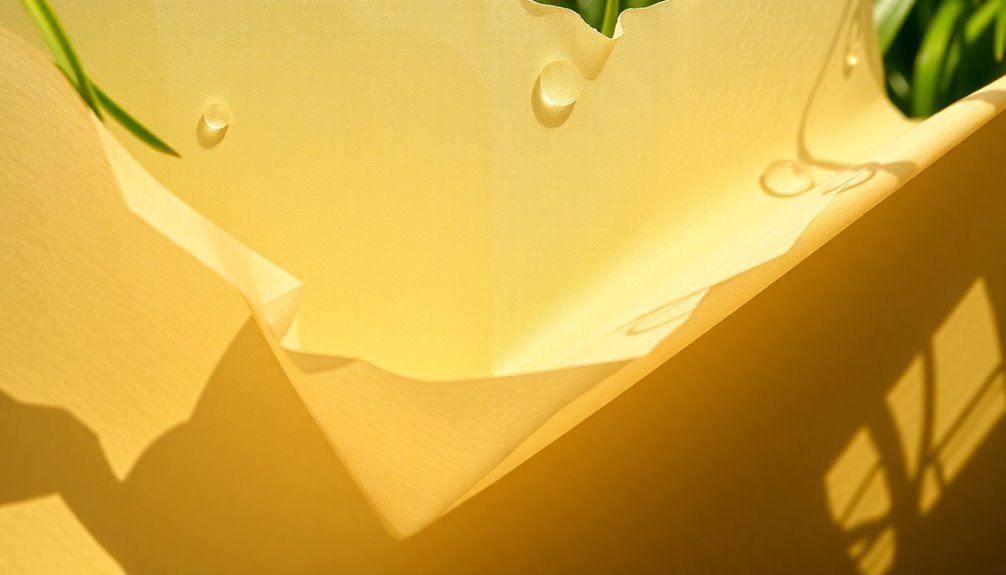
When you opt for acid-free tissue paper for preservation, you're also making a choice that benefits the environment. Unlike regular tissue paper, which often isn't recyclable, acid-free tissue is biodegradable and compostable. This means it breaks down naturally, reducing the amount of waste that ends up in landfills.
The manufacturing process of acid-free tissue typically involves fewer harmful chemicals, which minimizes its overall environmental impact. Many brands use recycled materials or sustainably sourced wood fibers, ensuring responsible resource management. By choosing acid-free options, you're supporting sustainable practices that help protect our forests and ecosystems.
Additionally, proper disposal methods for acid-free tissue paper encourage recycling and composting. This further reduces waste and promotes a circular economy. By integrating acid-free tissue into your life, you're not only preserving your items but also making an environmentally friendly choice.
Every little action counts, and using acid-free tissue is a simple yet effective way to contribute to a healthier planet. In the long run, your choice supports efforts to reduce the carbon footprint associated with packaging materials, making a positive impact on our environment.
Purchasing Acid-Free Tissue Paper

Finding the right acid-free tissue paper can make all the difference in preserving your valuable items. When you decide to buy acid-free tissue, consider a few key factors to guarantee you get the best product for your needs:
- Labeling: Always check that the tissue paper is clearly labeled as acid-free.
- Certifications: Look for certifications like the Forest Stewardship Council (FSC) to guarantee responsible sourcing.
- Application: Determine what you'll be using the tissue for—whether it's food packaging, delicate fabrics, or fragile objects like glassware and jewelry.
- Supplier Verification: Guarantee you verify the safety and specifications with the supplier, especially for food-related applications.
Acid-free tissue paper is widely available from various suppliers, including Springpack, which offers a range of options tailored for different uses.
You can easily find acid-free tissue in both online and physical stores, making it convenient to choose products that fit your specific packaging and preservation requirements.
Disposal Methods for Tissue Paper
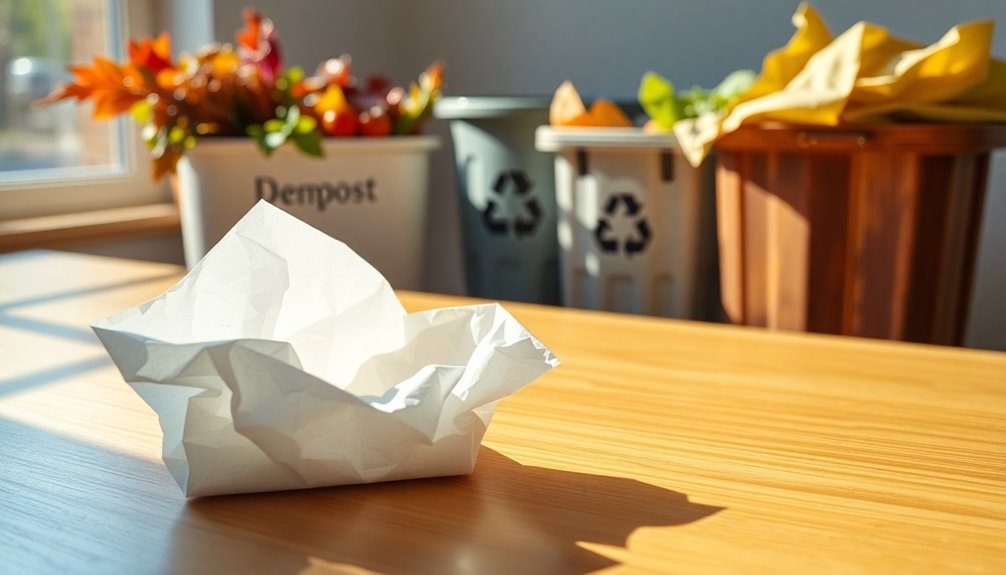
Proper disposal methods for tissue paper are important to contemplate, especially after you've chosen acid-free options for your preservation needs.
Acid-free tissue can be recycled with other paper products, thanks to its chemical-free composition. This promotes responsible waste management and supports eco-conscious practices.
When disposing of acid-free tissue, check your local recycling guidelines. Some areas accept it in recycling bins, while others may have different rules. If your acid-free tissue is clean and free of contaminants, recycling is a great option to reduce landfill waste.
However, if you're dealing with non-recyclable tissue paper, it's best to toss it in a waste bin designated for general trash.
Unlike acid-free tissue, regular tissue paper often contains harmful additives that may not break down effectively in compost.
For biodegradable options, remember that acid-free tissue can break down in compost within about 90 days, making it a better choice for the environment.
Reusing Acid-Free Tissue Paper
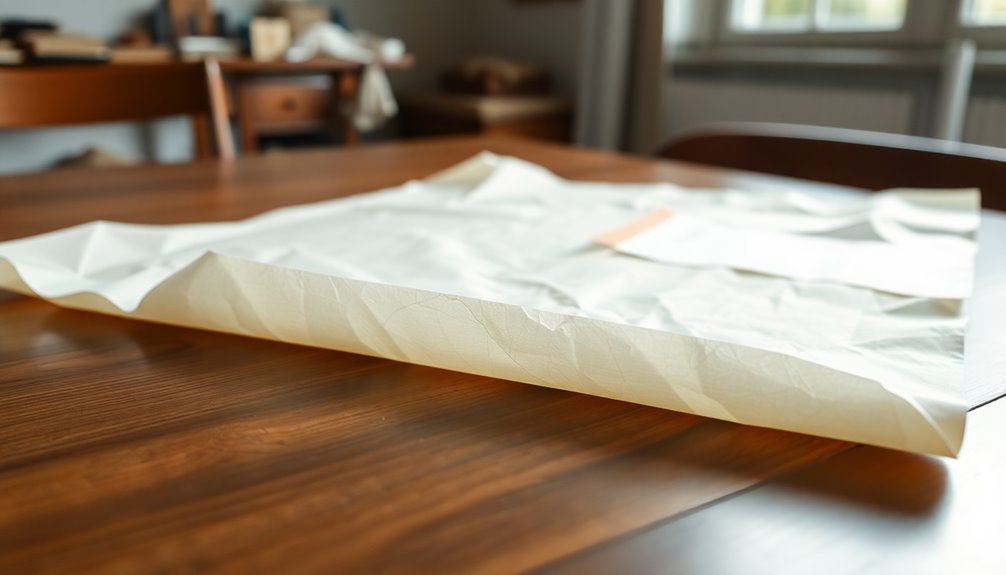
Acid-free tissue paper isn't only a sustainable choice but also a practical one, as it can be reused in various creative ways.
Since it doesn't release harmful toxins, you can safely wrap or store items without worrying about their quality.
Here are some ideas to help you maximize the use of your acid-free tissue:
- Gift Wrapping: Use it to wrap gifts, adding a touch of elegance and thoughtfulness.
- Storage Protection: Line storage boxes to protect delicate items, keeping them safe from dust and scratches.
- Craft Projects: Incorporate it into your crafts for collages, scrapbooking, or other artistic endeavors.
- Unboxing Enhancements: Repurpose branded acid-free tissue paper to elevate the unboxing experience, showcasing unique designs.
Confirming Acid-Free Status

When you're looking to confirm the acid-free status of tissue paper, it's important to rely on specific indicators that guarantee its quality.
Start by checking for certifications from trusted suppliers. These certifications often involve rigorous testing for acidity levels, so you can be confident in the product. The PAT test is a common assessment that helps determine the longevity of the paper, ensuring it won't degrade valuable items over time.
You can also take matters into your own hands by using pH testing pens or pH meters. If the results show yellow or clear, the paper's unsuitable for conservation.
Ideally, acid-free tissue should have a pH range of 6.5 to 7 or higher when buffered, which prevents yellowing and brittleness in stored materials.
Always choose tissue paper from reputable brands that provide documentation of their acid-free claims. This way, you'll be confirming acid-free status effectively and ensuring the safe preservation of your delicate items.
Frequently Asked Questions
How Can I Tell if Tissue Paper Is Acid-Free?
To tell if tissue paper is acid-free, look for labels that say "acid-free" or "archival safe."
You can also use a pH testing pen; a reading of 6.5 to 7 or higher indicates it's safe.
Check for certifications like the PAT test, which confirms longevity.
Finally, examine the paper's feel—if it's yellowed or brittle, it likely contains acids that could harm your items.
Always choose high-quality options for preservation.
What Paper Is Acid-Free?
When you're looking for acid-free paper, focus on options like archival paper, watercolor paper, or certain types of cardstock.
These papers typically have a pH level of 6.5 to 7.0 or higher, ensuring they won't degrade over time.
Always check for labels or certifications that confirm their acid-free status.
If you're unsure, trusted suppliers often provide testing results, so you can feel confident in your choice for long-lasting preservation.
What Is the Ph of Tissue Paper?
The pH of tissue paper can vary, typically ranging from acidic to neutral.
If you're using regular tissue paper, it might contain natural acids from wood pulp, leading to a lower pH.
On the other hand, acid-free tissue paper usually has a pH between 6.5 and 7.0, making it neutral or slightly alkaline.
To determine the pH of your tissue paper, you can use pH testing pens or meters for accurate results.
Is PPS Tissue Paper Acid-Free?
Yes, PPS tissue paper is acid-free.
When you choose this type of tissue paper, you're ensuring that it won't degrade or yellow over time, protecting your sensitive items.
Its neutral pH means it won't react with or damage your documents or photographs.
For ideal preservation, always check that the tissue paper meets industry standards for acid-free status.
Conclusion
To sum up, using acid-free tissue paper is a smart choice for preserving your precious items and ensuring their longevity. It offers benefits that regular tissue paper can't match, like protection against deterioration. Whether you're storing photographs, artwork, or delicate fabrics, opting for acid-free options will keep them safe. Remember to check for the acid-free label when purchasing, and consider reusing what you have. Taking these steps will help you protect your belongings while being environmentally conscious.

